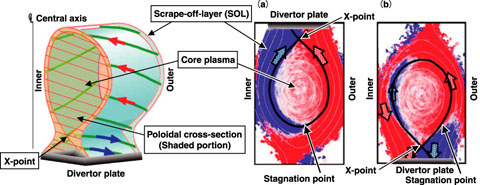
Fig.3-21 Schematic of plasma flow in the tokamak edge SOL |
Fig.3-22 Two-dimensional structure of plasma flow for (a) upper X-point and (b) lower X-point cases |
|
Plasma in the SOL, which surrounds the core plasma, mainly flows along the magnetic field line (green line), and finally reaches the divertor plate (blue arrow), but the reverse flow was observed as shown by the red arrow.
|
(a) In the upper X-point case, the plasma flows symmetrically into the inner part and outer part of the divertor plate.
(b) In the lower X-point case, plasma flow is directed away from the divertor plate in the outer SOL region. The black line represents the magnetic separatrix with an X-point.
|
Plasma flow in the scrape-off-layer (SOL) of the tokamak edge plays an important role for heat and particle control in fusion reactors. Energy and helium ash generated by fusion reactions in the hot core region are diffused across the closed magnetic surfaces to the open-field SOL region. The flow is expected to efficiently expel helium ash and to retain impurities enhancing radiative cooling in the divertor region, if the flow is directed towards the divertor plate (blue arrow in Fig.3-21). It has been experimentally observed, however, that the flow direction is sometimes the opposite: from the plate side to the middle of the SOL in the outer SOL region (red arrow in Fig.3-21). Many fluid model simulation studies have been carried out with regard to this flow structure problem. The simulation results were compared with experimental results, but satisfactory agreements were not achieved.
We believe that this may be caused by the particle behavior. We therefore investigated the SOL flow patterns using the advanced first-principles particle simulation code PARASOL, and found that the major mechanism of the pattern variation was due to the X-point location. The PARASOL code traces behaviors of a large number of ions and electrons in the whole tokamak region, consisting of hot core and SOL-divertor regions. Particle orbits including gyro-motion are fully solved under the influence of the electric field self-consistently calculated by a particle-in-cell method. Coulomb collisions between particles are accurately simulated by a Monte-Carlo binary collision model. Fig.3-22 shows the two-dimensional structure (poloidal projection on a poloidal cross-section) of the plasma flow (V//) parallel to the magnetic field. For the upper X-point case (a), V// is directed to the diverter plate both in the inner (central axis side) and outer SOL regions, and the stagnation point (V// = 0) is located symmetrically at the bottom. On the other hand, for the lower X-point case (b), V// in the outer SOL region has a backward flow pattern (counterclockwise flow near the outer mid-plane). The stagnation point moves below the mid-plane of the outer SOL. In comparison with experimental results, the simulation produced very similar flow patterns both qualitatively and quantitatively. Performing various parametric surveys, we found that the complex edge plasma flow pattern is governed mainly by the ion orbits in the toroidal geometry of the tokamak magnetic field.